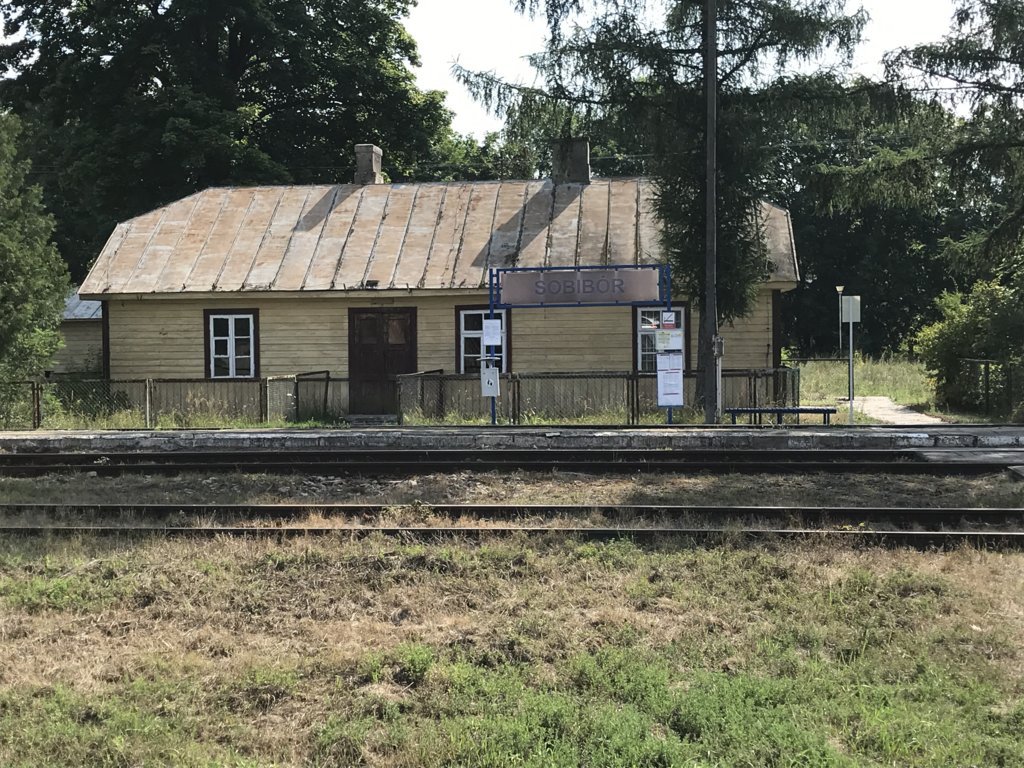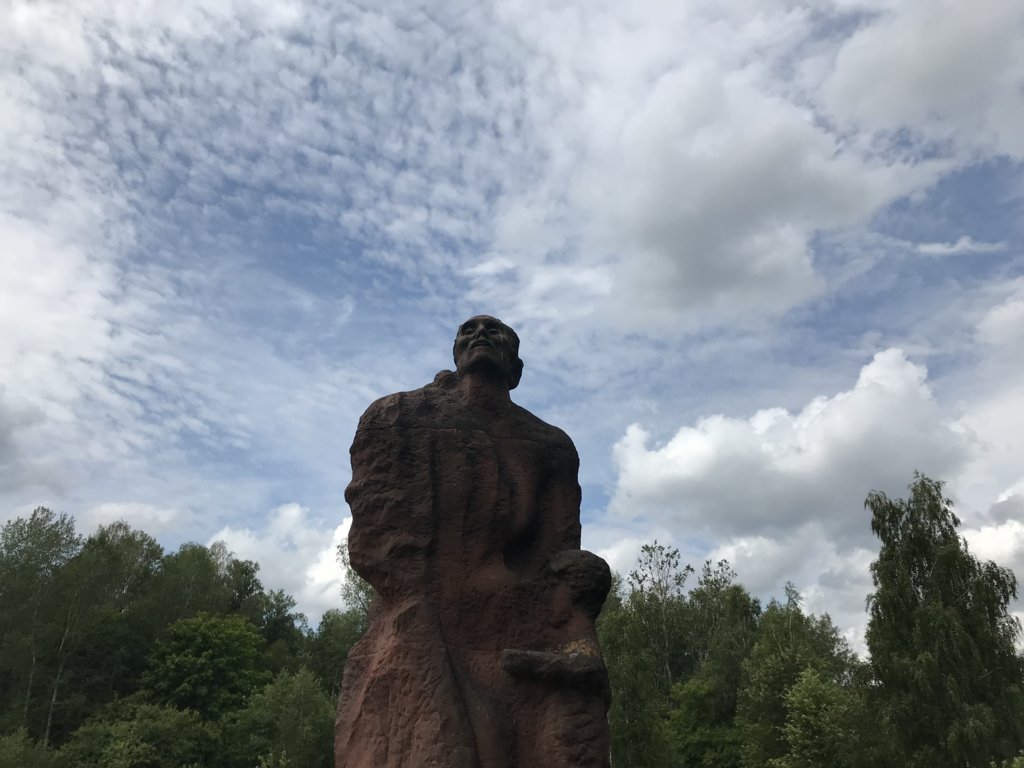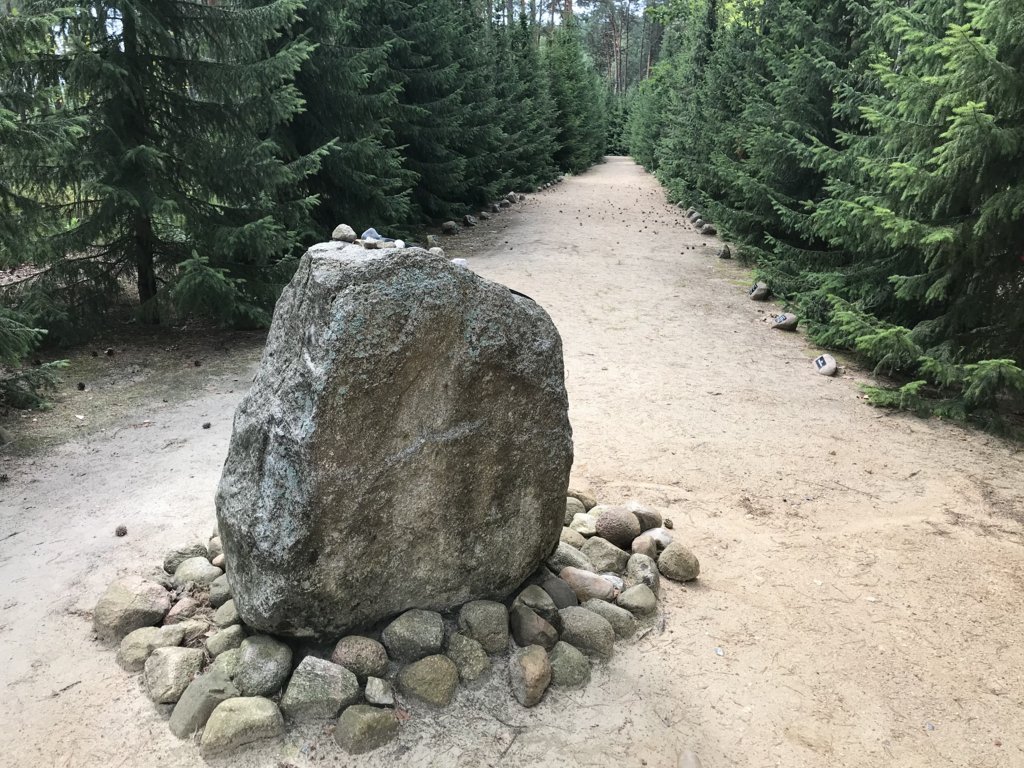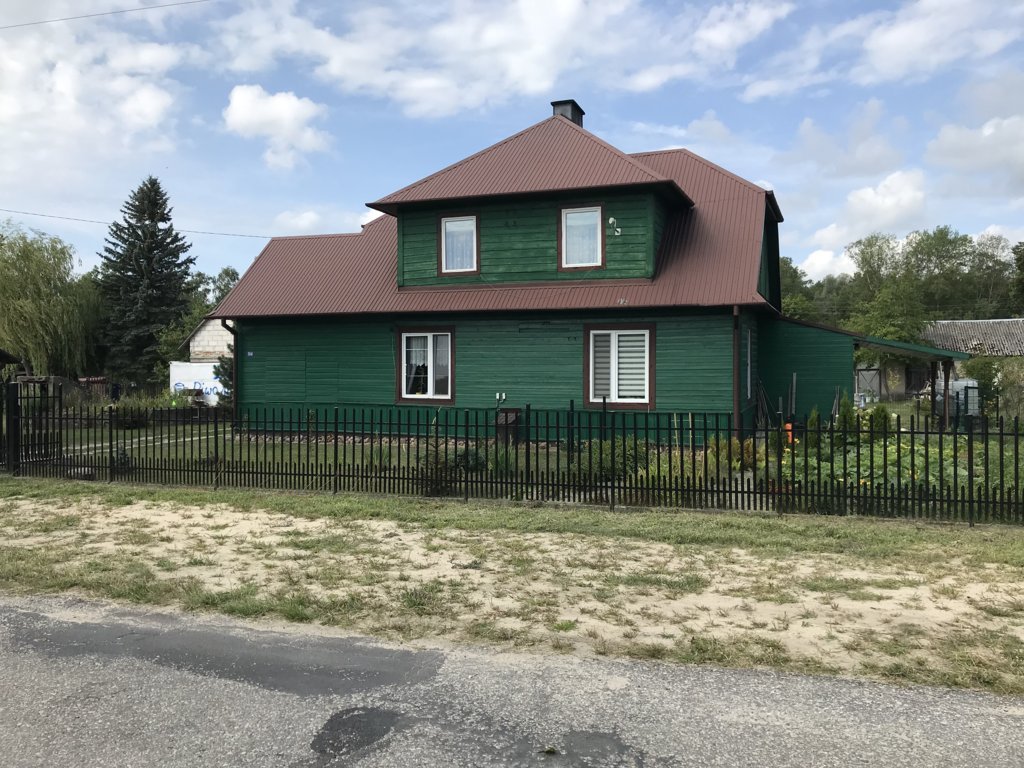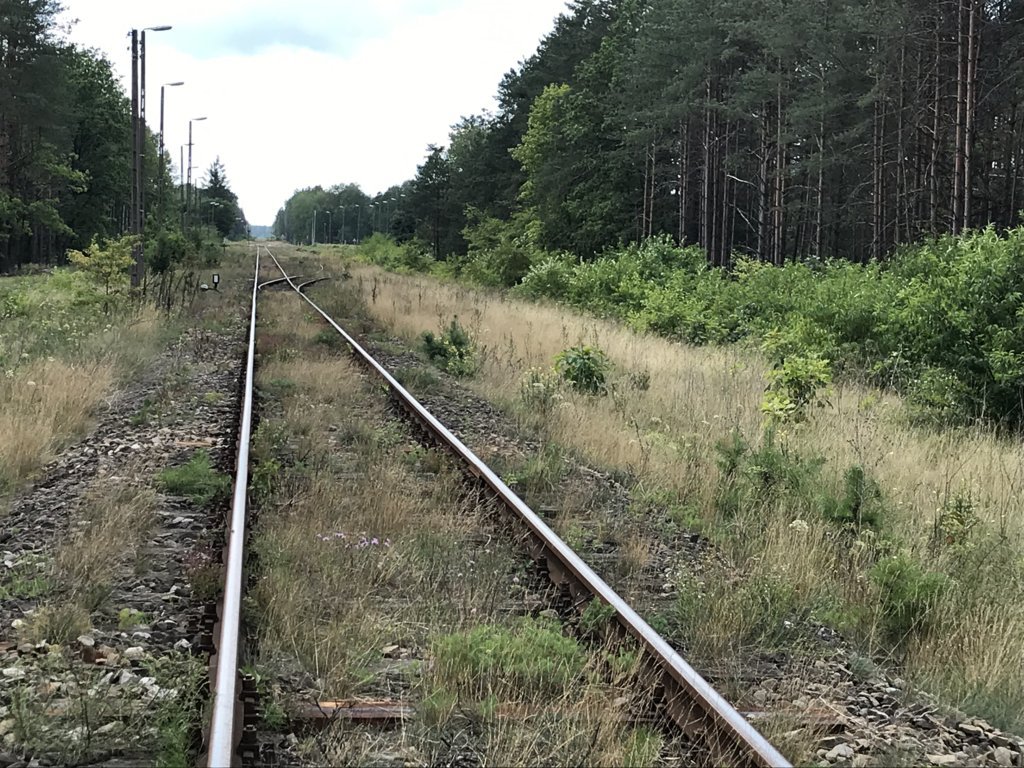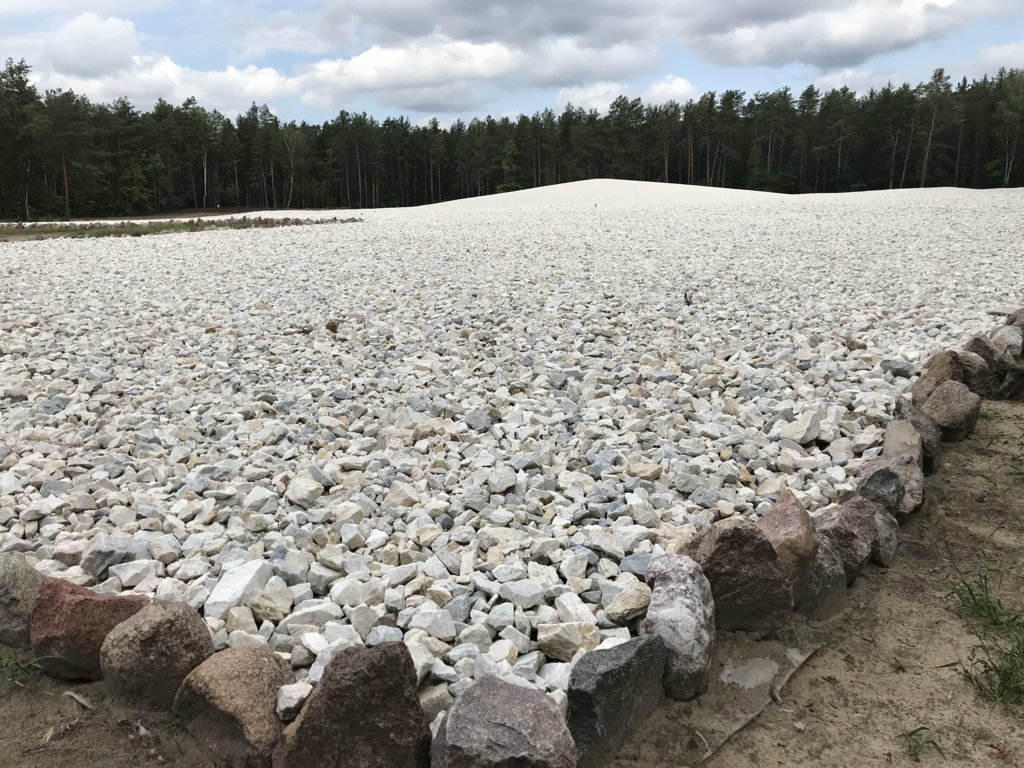SOBIBOR
Sobibor extermination camp
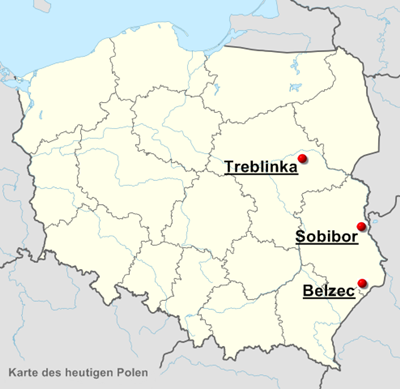
The Sobibor extermination camp was a German extermination camp near the village of Sobibór, a district of the town of Włodawa in south-eastern Poland, which today has 350 inhabitants. It was located on the eastern border of what was then the Lublin district of the Generalgouvernement, in what is now the border triangle of Poland, Belarus and Ukraine.
The camp was one of three camps operated by the Nazis from 1942 as part of “Aktion Reinhardt”. Behind the code name lay the extermination of Polish Jews, ordered by SS chief Heinrich Himmler. The camp, whose sole purpose was the immediate murder of Jews, was built six kilometers from the village of Sobibor at the end of 1941 directly on a railroad line and near a forest.
It is estimated that up to 250.000 Jews, including 34.000 children, were murdered in gas chambers at the Sobibor extermination camp.
Structure of the camp
The structure of the camp was similar to that of Belzec, although Sobibor was larger. The camp comprised three separate areas.
- Camp I, with the commandant’s villa, weapons arsenal, supply facilities and accommodation for around 30 German SS members and 90 to 120 “Trawniki men”, was located directly on the railroad track. This sub-camp also contained barracks for an average of 50 Jewish prisoners, who were deployed there in repair workshops and for auxiliary services.
- Camp II was shielded from view. In addition to stables and areas for growing vegetables, there were several accommodations for 400 prisoners. As a rule, 18 German members of the SS were assigned to supervise the camp. The head of this section in 1942 was Paul Rost. All of the victims’ possessions were collected, sorted and stored in Camp II. From this part of the camp, a 150-metre-long and three to four-metre-wide corridor, called “Himmelsstraße”, which was surrounded by barbed wire and interwoven fir branches, led to the extermination site in Camp III.
- Camp III was a stone building with gas chambers in which the victims, who had already been stripped of their clothes in Camp II, were asphyxiated by engine exhaust fumes. The murdered victims were buried by a work detail in a pit that was 60 meters long and 20 meters wide. Camp III contained the kitchen and accommodation for the prisoner laborers, who had to dispose of the bodies in strict isolation from the other parts of the camp. From the summer of 1942, the labor detachments had to exhume and burn the corpses before they themselves were murdered.
In June 1943, the outer fence of the camp was also mined. In the early summer of 1943, work began on setting up a fourth section of the camp, where loot ammunition was to be stored and processed; this project was abandoned after the Sobibór uprising in October 1943.
Site plan based on the memoirs of SS-Oberscharführer Erich Bauer and the survivor of the “Sobibor Uprising” on October 14, 1943, Thomas Blatt.
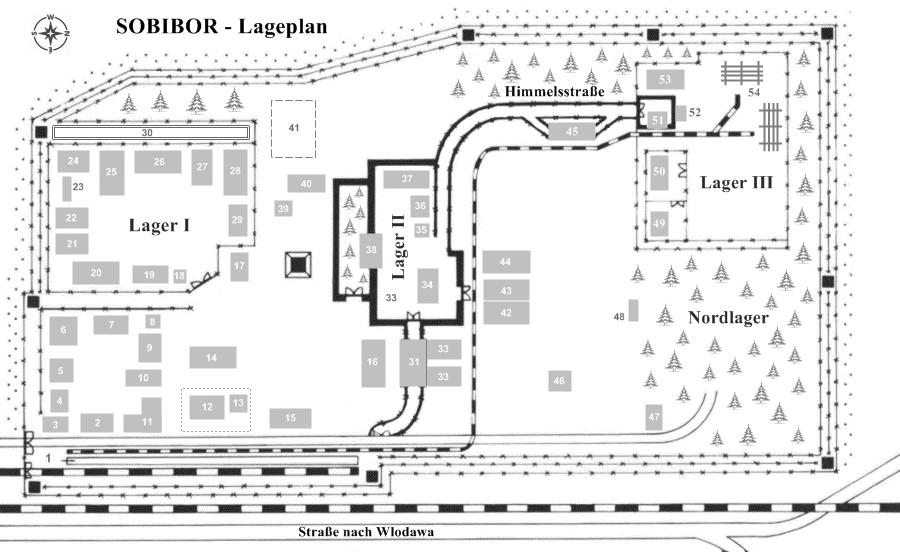
Pre-storage
1 – Ramp
2 – Dentist and detention bunker for SS and Ukrainian Trawniki men
3 – Guardhouse
4 – Storage room and clothing room for the SS
5 – Accommodation rooms
6 – Camp commander’s residential building
7 – SS laundry
8 – Old barber stables
9 – SS bathing and laundry room
10 – SS-Oberscharführer Bauer’s garage
11 – Kitchen for the SS camp crew
12 – Former post office building and SS accommodation
13 – Ammunition chamber
14 – Accommodation barracks for Ukrainian Trawniki
15 – Accommodation barracks for Ukrainian Trawniki
16 – Accommodation barracks for Ukrainian Trawniki
17 – Bakery
Camp I
18 – Pharmacy
19 – Tailoring workshop for SS
20 – Shoemaker’s workshop and saddlery
21 – Joinery and locksmith’s shop
22 – Joinery and locksmith’s shop
23 – Latrine
24 – Painter’s workshop
25 – Accommodation for Jewish workers
26 – Accommodation for Jewish workers
27 – Kitchen
28 – Tool shed
28 – Accommodation for Jewish women employed in the laundry
29 – Shoemaker’s workshop for Ukrainian Trawniki men
30 – Moat
Camp II
31 – Transit barrack (baggage collection)
32 – Barrack for suitcases and luggage of the Jews
33 – Barrack for suitcases and luggage of the Jews
34 – Food store
35 – Wagon shed
36 – Storage for valuables which were taken from the Jews
37 – Horse stable
38 – Former forester’s lodge, administration and dormitory for the SS men, storage for valuables
39 – SS laundry
40 – Sorting house (clothing of the Jews)
41 – Garden
42 – Barracks for Jewish prisoners’ clothing
43 – Barrack for Jewish prisoners’ clothing
44 – Sorting barrack
45 – Reception barrack for Jewish prisoners
46 – Incineration plant
47 – “Lazaretto” (former chapel) where Jews who could no longer walk on their own after arrival were murdered
48 – Latrine
Camp III
49 – Barracks for Jewish workers
50 – Accommodation barracks for the Jews who worked in Camp III, kitchen and dentist’s quarters
51 – Gas chamber (fenced-in area)
52 – Engine house for the gas chamber motor
53 – Enclosed courtyard
54 – Mass grave
Camp IV
Has not been completed. Russian ammunition (loot ammunition) was to be processed here.
Perpetrators
The first commandant of the camp was Franz Stangl, a lieutenant in the protective police. Like Wirth, he had previously been involved in the murder of mentally ill and disabled people as part of the “T4 campaign”. He was sent to Sobibor in April 1942. The vast majority of the other 25 – 30 SS men at the camp had also previously been involved in the murders in the six killing centers. They were supported by an average of 120 mainly Ukrainian guards, who had previously been prisoners of war and had then “voluntarily” received an introduction to their work for the SS in Trawniki.
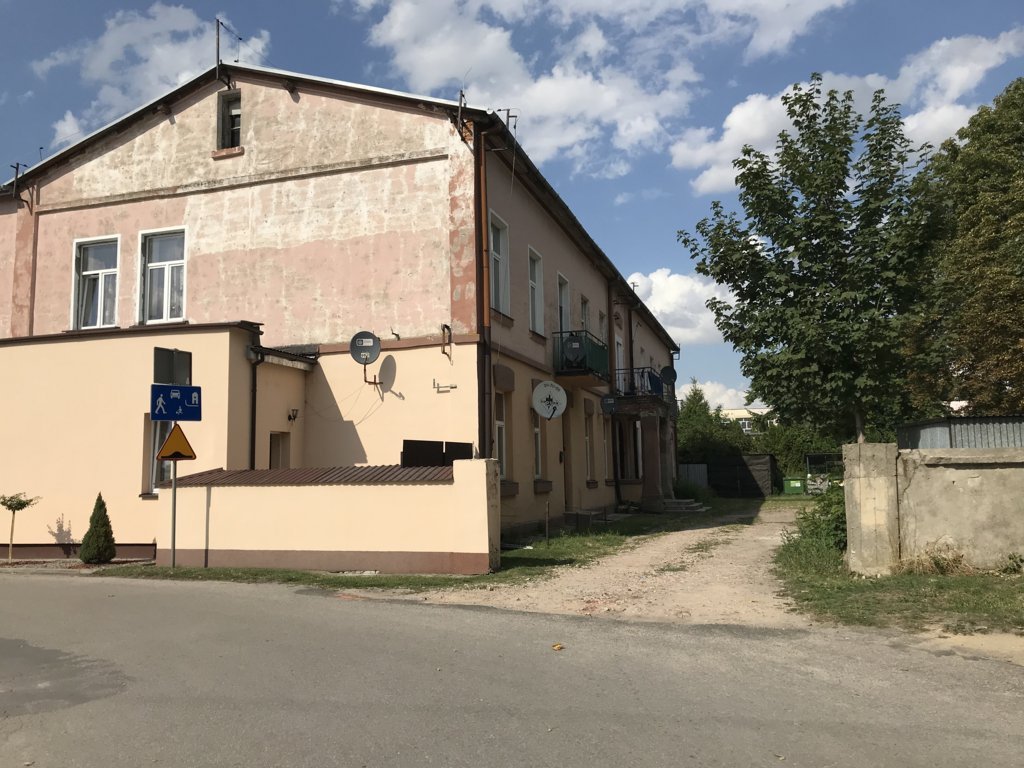
Accommodation of the Ukrainian guards in Trawniki
The course of the extermination
Most of the people arrived at the extermination camp on freight trains. The trains stopped at Sobibor station, then drove onto the side track and to the ramp. There, the people were beaten out of the wagons and had to leave their luggage. The sick, small children and those unfit for transportation were loaded onto horse-drawn carts and taken to the former chapel. There, at the so-called “Lazarett”, they were dragged out of the wagon and murdered in a pit. An SS man gave the other Jews a speech: they would now be taken to the showers, in the meantime their clothes would be disinfected, and then they would be taken to the Ukraine for work. Initially, these speeches inspired confidence, especially among foreign Jews; some even clapped and sang. Afterwards, the men and women and their children had to undress separately and hand over all their valuables.
The naked people were herded through the “hose” to Camp III according to gender. On the way there, the women’s hair was cut off in a barrack. Then the men were herded into the gas chambers first, followed by the women and children. Everything was done in extreme haste, with shouting, beatings and insults. The Jews were in shock and ran into the gas chambers to escape the abuse. When the chambers were overcrowded, the doors were closed and the engine started. After 20 to 30 minutes, the people were dead. The Jewish prisoners from the Sonderkommando opened the doors, pulled out the murdered people, took them to the mass graves and threw them in. After the gas chambers had been cleaned out, the killing was repeated with the next group of people.
Uprising
In the spring of 1943, fewer and fewer transports came to Sobibor, which the prisoners interpreted as a sign that the camp was about to be dissolved. They feared that they too would be murdered as witnesses to the crimes. They therefore began to plan an uprising. They were supported by Soviet prisoners of war who had been working as forced laborers in the surrounding forests since September 1942. The uprising broke out on October 14, 1943. The rebels killed several members of the SS and “Trawniki”. Around 300 prisoners managed to escape, 47 of whom later lived to see the end of the war.
The SS then murdered the remaining camp prisoners who had been unable to escape. The SS members who were killed were coffined and buried in the military cemetery in Chełm with military honors.
The camp was no longer used, but razed to the ground. Afterwards, an unsuspicious-looking farm and a specially reforested young forest remained on the former site of the extermination camp.
Memorial
For decades, there was little to remember the victims of Sobibor, most of whom were Jewish. Since 1965, there has been a memorial at the historic site, which was expanded to include a museum in 1993. Construction of a new memorial on the former camp site began in 2017. In addition to Poland, Israel, the Netherlands and Slovakia, the Federal Republic of Germany is also involved in its realization.
Memorial - Sobibor
Literature
Jules Schelvis
Vernichtungslager Sobibór
Barbara Distel
Sobibor
Der Ort des Terrors
Geschichte der nationalsozialistischen Konzentrationslager
Nikolaus Wachsmann
KL: Die Geschichte der nationalsozialistischen Konzentrationslager
